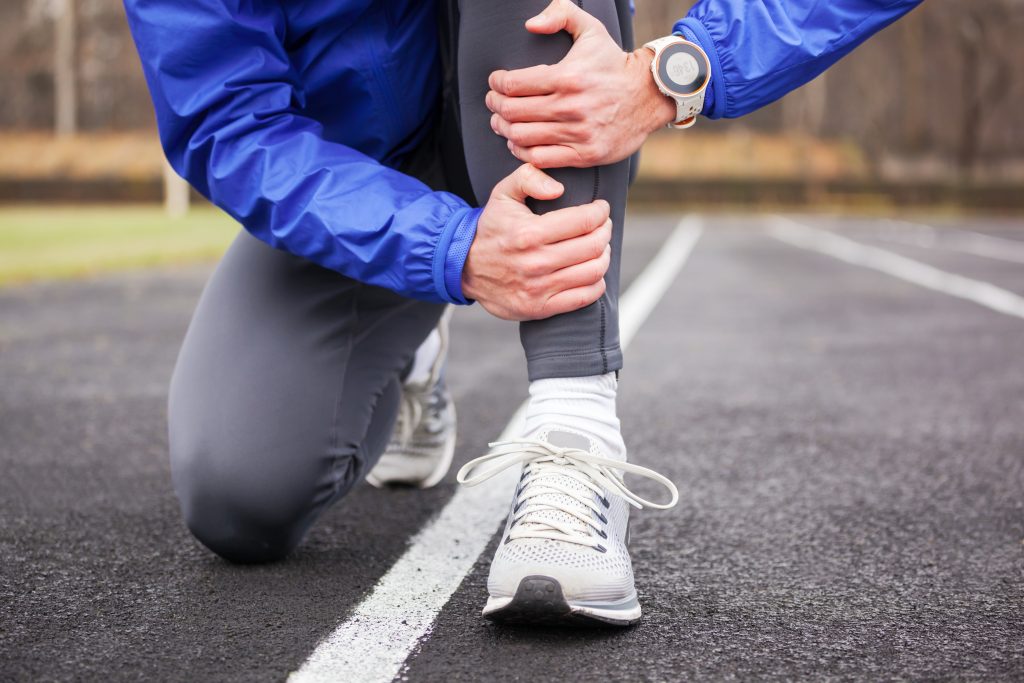If you’re an avid runner pounding the pavement or someone who spends long hours on their feet at work, it’s more than likely you’ve experienced shin splints. These sharp or aching pains along the shinbone can disrupt your training routine or daily activities, leaving you frustrated and fatigued.
Fortunately, shin splint pain doesn’t last forever, and learning how to treat it effectively on your own and prevent it from happening again is possible with the principles of physical therapy.
What causes shin splints?
Shin splints, medically known as medial tibial stress syndrome, occur when the muscles, tendons, and/or bone tissue around your tibia (shinbone) becomes inflamed. These tissues are sensitive to repeated stress or overuse, particularly during high-impact activities like running or jumping.
Here are a few common factors that can contribute to developing shin splints:
- Overtraining or sudden increases in activity level: Rapidly increasing the duration, distance, or intensity of your workouts can overload your leg muscles and bones, leading to microtears and irritation around the tibia.
- Improper footwear: Wearing unsupportive or worn-out shoes increases the risk of excessive stress on your shins. Poorly cushioned shoes or the wrong fit can lead to improper foot mechanics.
- Flat feet or unbalanced gait: Individuals with flat arches or who roll their feet inward while running may experience uneven distribution of stress on the lower legs, contributing to shin splints.
- Running on hard or uneven surfaces: Surfaces like concrete or uneven terrain can exacerbate the impact on your shins compared to smooth trails, tracks, or treadmills.
- “Cold” starts: Jumping straight into high-intensity activities without proper preparation can strain the muscles around your shins.
Shin pain can be tough because seemingly any amount of time on your feet can keep the issue from getting better on its own. If you’ve experienced shin pain lately, it’s important to stop as much of your activity as possible, assess your condition, and address the root causes now before the pain worsens.
How to treat shin splints
The first step toward getting relief is using simple, at-home care to help your legs heal on their own. Tried-and-true methods of treating shin splints at home include:
- Resting from running and walking as much as possible. Some low- or no-impact exercise, such as swimming, may still be okay.
- Using ice on your shins.
- Keeping your legs elevated to alleviate swelling.
At-home care can work well in the short-term, but if you’ve had several bouts of shin splints or your discomfort isn’t going away on its own, physical therapy offers more targeted, professional treatment techniques. We may use active recovery techniques such as stretches and exercises like:
- Toe drag stretches
- Calf stretches
- Hamstring stretches
Incorporating stretches as part of your shin splint treatment often optimizes recovery, restores flexibility, and helps prevent future issues.
How to prevent shin splints
The best cure for shin splints is prevention. By adopting a few smart habits, you can significantly reduce your risk and keep your legs feeling strong and pain-free for longer.
1. Warm up and stretch
Always start your workouts with a few minutes of warm-up to loosen up your leg muscles and promote blood flow. Incorporate dynamic stretches like lunges or leg swings to prepare your body for motion.
2. Make sustainable progress
For fitness enthusiasts or new runners, be conservative when you increase your running distance or intensity—experts recommend no more than a 10% increase in speed or distance per week to avoid overloading your body. Listen to your body and take rest days as needed.
3. Wear proper footwear
Invest in high-quality running shoes that provide ample support and cushioning. If you have flat feet or overpronation, consider orthotics or insoles to help stabilize your stride and minimize stress.
4. Vary your terrain
Part of the joy of running is that you get to enjoy new sights and scenes throughout your community. If you frequently run on hard surfaces like concrete, try alternating your routes to include softer terrains like trails, grass, or running tracks.
5. Strengthen your lower legs
Some people who regularly get shin splints can usually benefit from the protection and resilience of stronger calf muscles. Calf-strengthening exercises such as calf raises and ankle rolls build resilience in the muscles around your shins. This added strength reduces the risk of strain, even during demanding activities.
6. Get a running gait analysis
One way to know exactly how you should be running is with a professional gait analysis. At Excel, we offer running gait evaluations to diagnose a range of anatomical and mechanical concerns, such as the need for orthotics, recommendations for running shoes, and advice on how to run more balanced and symmetrical. Any of these insights as well as others we may find can help you prevent injuries of all kinds and enjoy the run more.
Calf and knee pain treatments near you
Whether you want to run marathons or simply enjoy staying active outdoors, shin splints can throw a wrench in your plans. But you don’t have to live with the pain or let it disrupt your daily routine.
At Excel Sports and Physical Therapy, we specialize in helping people live their most satisfying active lifestyle with holistic treatments for leg pain and running injuries. From professional evaluation to tailored exercise plans, we’ll help you recover faster and prevent future setbacks.
Start a conversation with our team about your concerns, symptoms, or goals by calling a nearby clinic or requesting an appointment online today.
